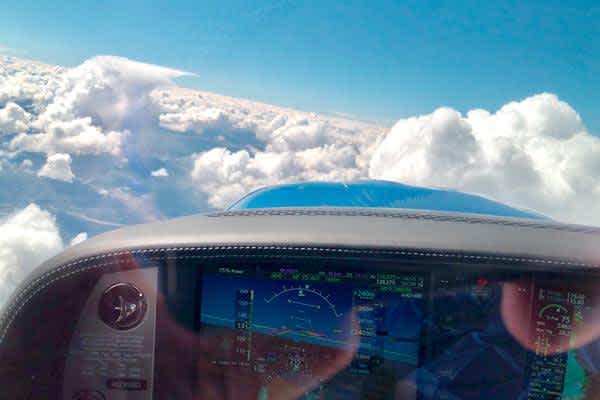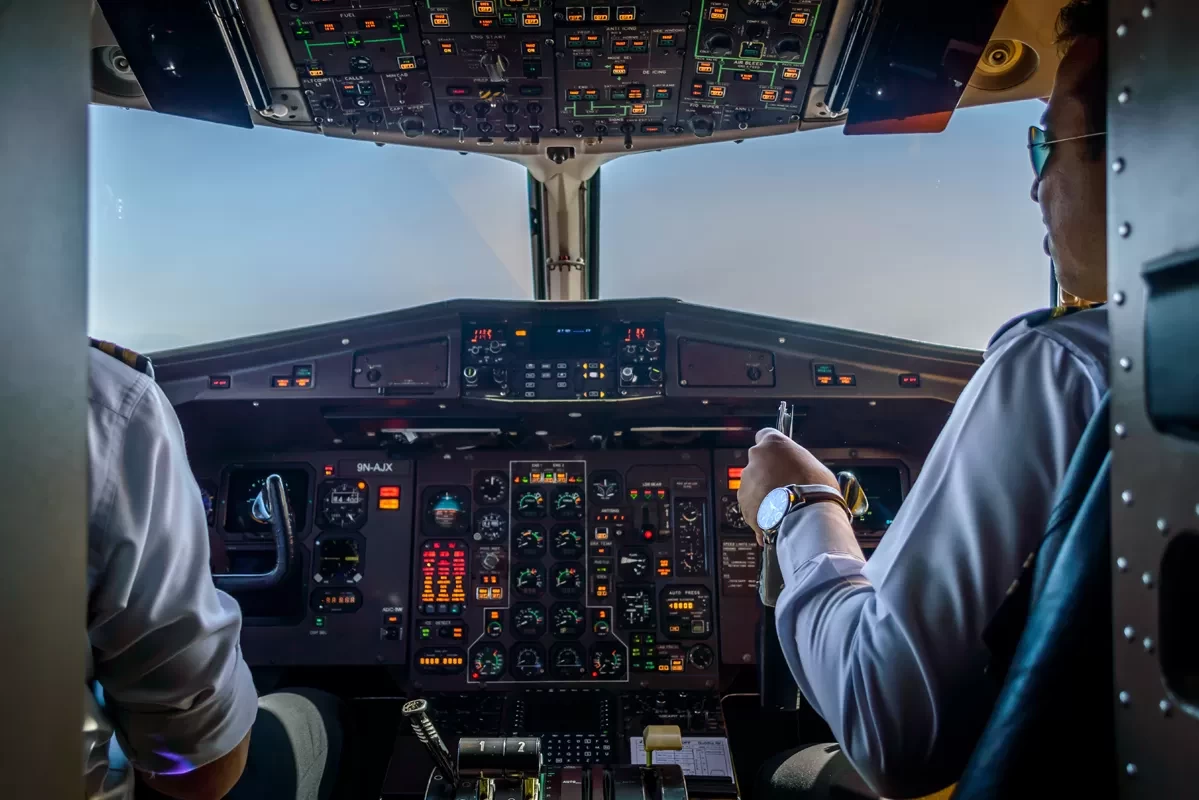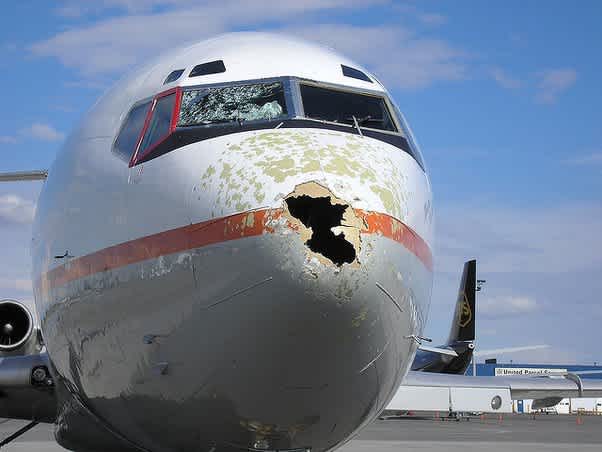When you drive your car through the fog, you can't see anything unless it's close to you and, preferably, brightly lit, right?
It's the same in a plane, but there's nothing close enough to see except parts of your plane. As a result, there is a lot of turbulence on the plane. Here's how dangerous it could be to travel through the clouds:
Image depicting a plane flying through clouds
Major factors that make flying through clouds difficult.
Flying through clouds can be similar to driving through the fog—you can't see much, but nothing terrible happens—but they can also pose a serious threat to pilots, planes, and passengers.
The type of cloud impacts the flying motion of an aircraft. Stratospheric clouds form in stable air. They appear to be smooth, flat clouds to you. If it rains, it will be the kind of steady, nice rain you could enjoy listening to while you snooze. The ride will be relatively smooth if you fly an aircraft through these types of clouds. If you hear rain striking the plane when you fly through a cloud, you will know if there is rain in the cloud.
When planes have encountered violent thunderstorm clouds in flight, they have been damaged and even split up throughout history. Some clouds, such as cumulonimbus, pose a direct threat to aviation; others only indicate the possibility of a problem, and still, others do not influence at all.
Types of clouds and how does it affect the drifting of planes
Knowing the different types of clouds and how they affect weather and flight conditions is critical for pilots who want to appropriately assess threat levels. Even though there are hundreds of different kinds of clouds, the Civil Aviation Authority (CAA) divides them into three categories.
1. Low-Level Clouds that form below 6500 feet
Stratocumulus (Sc) – flattened heaped cloud
Stratus (St) – low-level dull grey layer cloud
Cumulus (Cu) – heaped or piled cloud
Towering Cumulus (TCu) – towering heaped cloud
Cumulonimbus (Cb) – rainy thundery heaped cloud

Picture of a tumultuous destructive cloud
2. Middle Clouds that usually form between 6500 feet and 20,000 feet
Altocumulus (Ac) – billowy mid-level cloud
Altostratus (As) – mid-level layer cloud
Nimbostratus (Ns) – rainy layer cloud
3. High-Level Clouds that usually form above 20,000 feet over New Zealand
Cirrus (Ci) – thin wispy hair-like high-level cloud
Cirrocumulus (Cc) – billowy or rippled wispy cloud
Cirrostratus (Cs) – veil-like high layer cloud
Turbulence when flying through clouds
Why do airplanes leap up and down and lurch around when flying through clouds? Is it possible for the plane to get damaged by extreme turbulence? To answer these questions, we must first define a cloud and understand the forces acting on an airplane during flight.

turbulence while flying through clouds
Why do you experience turbulence while flying through clouds?
Clouds are made of microscopic water droplets that develop as water vapor cools and rises. Due to the denser internal circumstances compared to the surrounding exterior air, these tiny water droplets form clusters in which the air swirls around unpredictably. As a result, there are complex updrafts and downdrafts.
Cloud-borne updrafts and downdrafts cause rapid and unpredictably changing lift forces on aircraft wings. The disparity between these shifts causes the airplane to lurch and hop around during the flight, causing "turbulence."
While most turbulence encounters are relatively routine (due to careful planning and skill), and airplanes are designed to withstand the forces and pressures imposed on them during these minor occurrences, it is the unpredictable nature of turbulence, combined with the low visibility, that makes it a danger to pilots, aircraft, and passengers.
If a pilot is inexperienced or encounters excessive turbulence, he or she may lose control of the aircraft while in flight. This is especially important when Cumulonimbus clouds (thunderstorm clouds) are present since they can hide severe turbulence, powerful vertical motions, severe ice, thunderstorms, and hail.
This is why, if possible, pilots avoid flying through clouds and arrange their flight path to avoid specific weather patterns involving enormous and dangerous cloud formations (for larger passenger aircraft, this means flying up above the cloud base).
How do planes fly through clouds?
Although clouds are dangerous, it is not always possible to avoid them while flying, so how can planes navigate through them? First, we must distinguish between flying with visual abilities and flying with instrument skills.

VFR and IFR flying explained
There are two sets of regulations that control how and when pilots can fly their aircraft during training. Visual Flight Rules (VFR) and Instrument Flight Rules (IFR) are the two options (IFR).
Pilots can use visual flying rules to gaze out of the window and fly according to what they observe. Because there are few or no external visual references when flying IFR, you must rely on the aircraft's onboard instruments to maintain flight.
Not many pilots are IFR-rated (capable of flying just in IFR conditions), as this necessitates additional training and expertise. When flying through clouds, the reduced visibility necessitates the use of Instrument Flight Rules. This explains why, if you are not IFR-rated, you must avoid clouds during your flight.
Is flying through clouds safe?
There is one significant factor that makes flying through clouds highly risky, aside from turbulence and having the proper skills to negotiate poor visibility flight conditions. This is the risk of a mid-air collision, most frequently with other planes, but also with projecting structures or landmarks that obstruct the combined airspace.
It is impossible for aircraft that can navigate using IFR, such as large passenger flights, to avoid traveling over clouds throughout their regular flight patterns, so how can they avoid colliding with other planes?
The pilots get updates from the ground-based Air Traffic Control (ATC), which uses onboard transponders and radio transmissions to maintain a track of every aircraft in the region. If this fails, some aircraft have emergency traffic collision avoidance systems onboard (TCAS).
Conclusion:
Thus, in most cases, flying through clouds is akin to driving through fog. You can't see as well as you used to, but everything else remains the same.
It also has a lot to do with the type of cloud. If it's a massive cumulonimbus cloud, the plane could be severely damaged because these clouds have tremendous up and downdrafts, as well as the potential for large hailstones.
